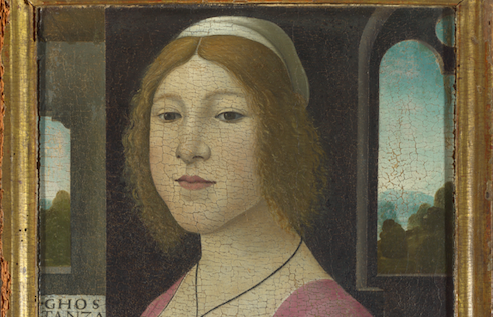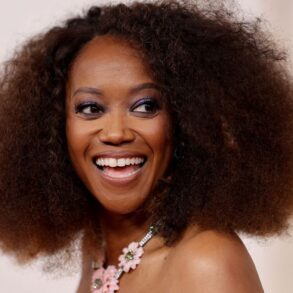
Last month, the Taliban government in Afghanistan indulged in a particularly malicious act towards women, passing a law closing all beauty salons. Having run a truck through all other freedoms, it attacked the one remaining place where women could still find employment and meet and mingle outside the home. Did those heroic religious warriors really see such spaces as cauldrons of vanity? Or was the aim to stop women experiencing some sense of solidarity and agency, even if it was limited to caring for their own bodies? Either way, the cruelty was breathtaking.
The question of the pursuit of female beauty – of what it means to women and how it is judged by the societies they are part of, particularly when those societies deny them equality – lies at the heart of Jill Burke’s terrific How to Be a Renaissance Woman. Its main canvas is two hundred and fifty years of the European Renaissance, with a focus predominantly on Italy, though philosophically the author ranges beyond that. Burke, by her own admission, is a historian who follows where the primary sources lead. In which case she must have come out covered in dust from this endeavour, since her research clearly took her into all manner of archival holes. Drawing on early published beauty pamphlets, letters, poems, songs, diaries and recipe books, not to mention treatises by both men and women and the rich material of Renaissance art, she has emerged with enough knowledge to open her own Renaissance Body Shop.
Not surprisingly, she introduces us to a cornucopia of suitably disgusting lotions and potions. ‘Snails, goat fat, veal marrow’: it seems that mixing one’s favourite animal fat and entrails provided the basis of most skin creams of the period. Then there were alternative therapies designed to balance the humours, which were the foundation of Renaissance medicine and, many thought, affected how one looked. The rule of thumb here seems to have been the need to purge most orifices every morning. Some defects demanded direct remedies. An ointment containing quick lime and arsenic got rid of unwanted body hair, not to mention a fair portion of your skin if you weren’t careful. (Timing here was everything: ‘it should be left on for the time it takes to say the Lord’s Prayer twice,’ advised the formidable 15th-century Italian ruler Caterina Sforza.) Those who needed to emphasise their breasts could try an early form of bra – indeed the book offers an illustration of one such prototype, discovered as recently as 2008. As for hair, that most symbolic feature of female power, it could be conditioned, crimped, curled, rinsed or dyed, with the handy back-up of extensions to make it look fuller.
For each product or treatment, Burke offers delicious first-hand evidence. According to a 15th-century German poem, many a woman ‘makes two bags for the breast’ and ‘with them she roams the streets so that all the men look at her’. A traveller in 1490s Venice recorded that the ‘great part’ of women’s hairstyles ‘is false hair: and this I know for certain because I saw great quantities of it on poles, sold by peasants in the Piazza San Marco’. The reader almost feels as if they are walking through the streets of the past.
Burke also sets out to put fashion in a wider historical context. Was the printing press as influential as social media is today when it came to the Renaissance beauty industry? When did the dominant ideal of a woman’s body move away from the Gothic (think of Cranach’s Eve: little apple breasts, long body, big hips) and back towards the hourglass figure favoured by Greek and Roman sculptors, whom Renaissance artists so revered? Might the arrival of the first African slaves in Italy at the end of the 15th century have made women emphasise the whiteness of their skin? (An intriguing suggestion, though not one easy to prove since the pursuit of white skin was a part of elite women’s fashion a long time before black slavery entered the picture.)
The thrust of all this is that essentially there is nothing new in the relationship between power, tyranny and beauty. The book is that rare thing, a serious history that is both accessible and entertaining – no more so than when it comes to the age-old debate as to whether women’s commitment to beauty is a sign of weakness, a pandering to male desire or a form of empowerment. Here Burke is in her element. Of course, there was no shortage of Renaissance men hammering on about women’s capriciousness, vanity and self-obsession. But what is fascinating is all the other opinions Burke finds, and how many of them come from women themselves. Some argued for women to free themselves from the shackles of appearance in favour of the life of the mind. Others, hard-headed in the face of reality, saw the pursuit of beauty either as a pastime to compensate for the absence of power or as a necessary weapon for any woman trying to forge a place for herself in the male-dominated world. Renaissance women – or those who had any agency in such matters – cared about what they looked like because, as Burke herself puts it, ‘they had to’. By the middle of the 16th century, with dowry inflation going through the roof, close on half of all women born into respectable families ended up in convents (Jesus Christ was a cheap bridegroom). And you can be sure it wasn’t the best-looking ones who had their heads shaved.
The publication of this meaty book coincides with a small but delightful exhibition of Renaissance marriage portraiture entitled ‘Painted Love’ at the Holburne Museum in Bath. Curated by the art historian Lucy Whitaker, it sets out to show how far portraiture in this period was an integral part of the marriage market – think of Henry VIII falling for a portrait of Anne of Cleves – and how one can discern emotion as well as salesmanship in the artists’ brushwork. I’ve no doubt Jill Burke would love this show, not least because it makes one think about a further telling detail from her book: that it wasn’t until the first decades of the 16th century that women had decent, let alone full-length, mirrors with which to assess the results of their work on themselves. Could this explain the Renaissance fascination with the myth of Narcissus?
Two Italian portraits stand out, both painted in the 15th century. The first is a razor-sharp profile (a mode influenced by the fashion at the time for Roman coins and medallions) by Alesso Baldovinetti of a woman who is clearly a looker: high-plucked forehead, pale skin, rosebud lips, marble-column neck and hair styled like a piece of confectionery. And in case you miss it, there’s a further coded message to her suitor: the family’s coat of arms emblazoned in embroidery on her sleeve. Here is a rich beauty no one would have turned down.
Next to her, a wooden panel painted twenty years later sends out quite a different message, proof perhaps that a gentle humanism was already infiltrating portraiture. We know from its inscription that the woman was Costanza Gaetani, who married into a minor branch of the Medici. But she feels like a real person. Sturdily built, with a jaw that looks like it could crack a walnut, she stares out, seemingly unfazed by the artist’s gaze. You can almost imagine her clambering down from the walls and setting about ordering the household in its daily tasks.
As Burke notes in her book, it is almost fifty years since the American scholar Joan Kelly, in a seminal essay, posed the question ‘Did women have a Renaissance?’ Since then, an army of scholars, of whom Burke is just one, have hunted through the archives to give voice to women who had opinions and minds of their own, even when it came to the serious but thorny question of what they were supposed to look like.








